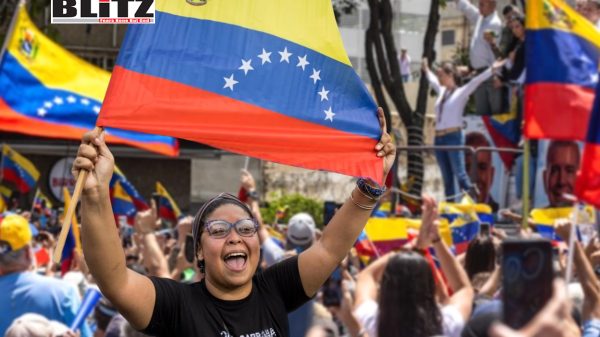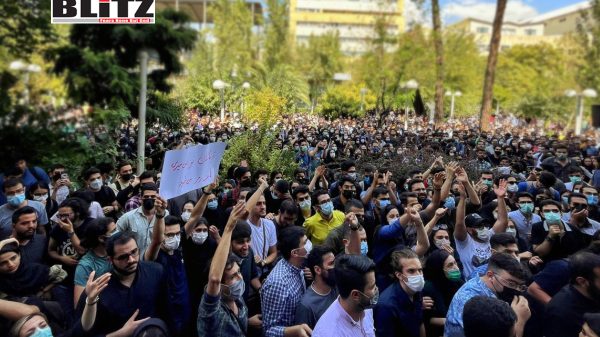Cartel figures exploit Mexico’s amparo system to delay justice and extradition
- Update Time : Tuesday, September 2, 2025

Mexico’s long-troubled justice system has once again come under scrutiny after a series of high-profile expulsions of alleged cartel members to the United States highlighted how powerful criminal figures have manipulated legal protections to delay prosecution and avoid extradition. The central focus of the controversy is the “amparo,” a constitutional safeguard originally intended to protect ordinary citizens from state abuse, but which has increasingly become a tool of choice for the country’s most dangerous criminals.
Earlier this month, Mexican authorities placed 26 suspected cartel operatives on a plane bound for the US, where they face indictments ranging from drug trafficking and money laundering to kidnapping and murder. Yet their removal was not conducted through Mexico’s traditional extradition process. Instead, officials invoked extraordinary national security powers to circumvent the years of legal stalling engineered by the suspects through the amparo system.
Security Minister Omar García Harfuch defended the decision in a televised press conference, arguing that the move was necessary to prevent cartel leaders from continuing to command violent operations from within Mexican prisons. “Many of them had obtained amparos in order to remain in low-security prisons, and others expected similar rulings,” he said, stressing that their ability to coordinate extortion, homicides, and kidnappings even while incarcerated posed an unacceptable risk.
The amparo, which translates as “protection,” is one of Mexico’s most important legal innovations. First introduced in the constitution of the short-lived Republic of Yucatán in 1841 and formally adopted by Mexico two decades later, the mechanism allows individuals to challenge any government action, law, or judicial decision they believe violates their constitutional rights. Over the years, at least 17 Latin American countries adopted similar frameworks, making the amparo a hallmark of regional jurisprudence.
In principle, the system has been a vital safeguard against authoritarian abuse. It has helped indigenous prisoners wrongfully convicted of kidnapping secure their release, halted environmentally destructive projects, and even supported challenges to restrictive abortion laws. But the very openness and breadth of the amparo has also made it ripe for exploitation.
Filing an amparo is technically free, but the process is highly complex, requiring specialized legal knowledge to succeed. That reality means wealthy defendants and well-connected criminal organizations are far better positioned to take advantage of it. As constitutional law expert Luis Pérez de Acha bluntly put it, “Only those that have the money to pay for specialized lawyers are those that benefit from the amparo.”
The most notorious example in the recent expulsions was Enrique Arballo Talamantes, who was serving a 72-year sentence for kidnapping and murder while also wanted in the US on heroin trafficking charges. Instead of facing swift extradition, Talamantes lodged an extraordinary 51 amparo petitions against everyone from the president and attorney general to judges and prison directors. Each petition stalled proceedings, buying him more time and ensuring he remained in Mexico’s prison system rather than a US courtroom.
Another case was Abigael González Valencia, an alleged leader of the Los Cuinis Cartel. Since his arrest in 2015, he had launched 62 amparos, along with a dozen legal complaints and multiple appeals. His filings ranged from challenges to extradition on the grounds of the US death penalty, which Mexico prohibits, to objections about his transfers between high-security prisons.
Authorities also cited two former Zeta Cartel members who managed to delay extradition 54 and 79 times respectively, and who were accused of orchestrating the murders of 17 prison officials. Meanwhile, Romanian crime figure Florian Tudor, alleged leader of the violent Riviera Maya Gang, has filed over 130 amparos since 2019 to block his extradition to Romania. Just this month, Tudor was moved from a maximum-security facility to a rehabilitation center, only to file yet another amparo alleging torture and harassment there.
The sheer volume of petitions illustrates how cartels weaponize the amparo to tie up courts in endless litigation. Each filing forces prosecutors and judges to respond, slowing down extraditions and creating opportunities for cartel leaders to regroup or continue operations behind bars.
For Harfuch and other security officials, the abuse of amparos represents a structural crisis. “This action was taken as a way to prevent them from continuing to order kidnapping, extortion, homicides and other crimes from prison,” the minister explained. His remarks were striking for their candor: a top official publicly acknowledging that the country’s judicial framework is unable to effectively handle its most serious criminal threats.
Pérez de Acha went further, calling the admission a recognition that “Mexico’s criminal justice system is broken.” He argued that whether due to corruption, incompetence, or institutional weaknesses, the courts have become incapable of fulfilling their mandate.
The Attorney General’s Office, for its part, defended the amparo process. Spokesperson Raúl Tovar stressed that rulings are based not on prosecutorial evidence but on the protection of constitutional rights. He declined, however, to address the allegations that the mechanism is being systematically manipulated by organized crime.
The implications extend far beyond the cartel elite. Human rights groups argue that the unequal access to the amparo widens Mexico’s already vast impunity gap. Jorge Peniche of the accountability organization Guernica 37 noted that while the mechanism is theoretically available to all citizens, in practice only those with money and influence can wield it effectively.
“The amparo is ‘free’ in quotation marks,” Peniche said, pointing out that the specialized lawyers required to file successful petitions are prohibitively expensive for most ordinary Mexicans. For marginalized communities, the amparo remains more of an abstract constitutional ideal than a practical safeguard.
This inequality is particularly stark when juxtaposed with the amparo’s occasional successes for wrongfully imprisoned indigenous groups, which often required the intervention of pro bono advocates or civil society organizations. For everyday defendants, filing dozens of amparos as cartel bosses routinely do is unimaginable.
Mexico’s decision to bypass normal extradition procedures and rely on national security powers was also influenced by growing pressure from Washington. The Trump administration, eager to see progress in combating drug cartels, had repeatedly criticized Mexico’s slow judicial processes. For US officials, the drawn-out amparo battles were evidence of dysfunction, if not outright complicity, within Mexico’s institutions.
By using expulsions instead of extraditions, Mexico effectively sidestepped years of pending amparo litigation. But critics worry that such extraordinary measures set a troubling precedent. If constitutional protections can be brushed aside whenever they prove inconvenient, the very principles of due process and human rights risk erosion.
The amparo remains both a cornerstone of Mexican law and a glaring vulnerability in the country’s struggle against organized crime. Its dual identity-as both a safeguard for the innocent and a shield for the guilty-underscores the paradox of Mexico’s justice system.
For now, cartel figures continue to exploit its provisions, filing petition after petition to stall their fate. And while the Mexican state can occasionally override these tactics through extraordinary powers, such steps are a tacit acknowledgment that its courts are unable to deliver justice efficiently and fairly.
Until meaningful reforms address the imbalance of access and the opportunities for abuse, the amparo will remain a powerful symbol of both the promise and failure of Mexican law: a tool meant to defend the powerless, but too often wielded by the most dangerous and powerful.
Please follow Blitz on Google News Channel










